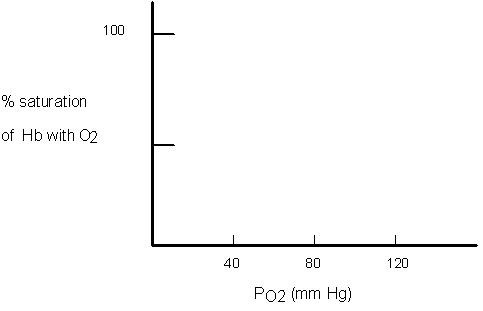You can download this page
in word doc here.
ZOOL 422: Spring,
1999
William J. Higgins:
Examination II
Please circle your recitation section #:
I am registered for:
Section: MON TUES WED THURS
FRI
2201 2204 2205 2208
2209
2202 2206
2203 2207
DIRECTIONS:
1. Please, please, please PRINT your name
on each and every page of this exam NOW!
2. You must use a pen (if you wish the right
to a re-grade request) and you absolutely must confine your answers to
the spaces provided. We will/can not hunt for random scribblings!
3. You may leave when you have completed
the exam until 9:40 AM. Place your examination in the appropriate
envelope at the front of the room. At this time everyone will remain
seated until all examinations have been collected at exactly 9:50 AM.
4. Read the second in this year's series of
words to live by and begin:
"Every time I think about exercise, I lie
down until the thought goes away.”
-WJH, 1994
PAGE
Higgins Points
Visitor's Score
2
33
3
37
4
57
5
30
6
43
TOTALS
200 POINTS
1. a. Fill in the graph below for normal
adult hemoglobin (Label it as Hb A). Be accurate!!!!

b. Fill in the graph for fetal Hb.
Label as HbF.
c. Myoglobin binds and stores O2
in skeletal muscle cells. It has one subunit. Fill in the graph
for myoglobin (label it as M).
d. Looking at the curve you have drawn,
what is the P50 value for Hb A?
_______________
e. Draw and label (as E) the curve for Hb
A under conditions of heavy exercise.
Why is this new curve beneficial to
the subject? ___________________________
__________________________________________________________________
f. Why is the steep slope of the curve for
Hb A so important?
__________________________________________________________________
2. In a very few words and only in the
space provided, list the major functions or roles of the following cell
types:
a. megakaryocytes: _________________________________________________
b. neutrophils: _____________________________________________________
c. monocytes: _____________________________________________________
d. B lymphocytes: _________________________________________________
e. basophils: ______________________________________________________
3. Consider an individual who begins to
inhale for a deep breath. As inhalation continues, the following
either (I)ncrease, (D)ecrease, or No ?
?
a. Diaphragm muscle cell length:
_____
b. Pleural space pressure
_____
c. Afferent vagal nerve activity
_____
d. Lung volume
_____
e. Pleural space volume
_____
f. External intercostal muscle
tension _____
g. Alveolar PO2
_____
h. Internal intercostal muscle
tension _____
i. Alveolar radius
_____
j. Alveolar surface tension
_____
k. Atmospheric pressure
_____
4. In its advanced stages, hypertension
results in cardiac hypertrophy, increased venous BP, decreased blood vessel
compliance, and resetting of the baroreceptors. Explain how each
of these accelerate the destructive positive feedback nature of the disease.
a. cardiac hypertrophy: _____________________________________________________
_________________________________________________________________________
b. increased venous BP:_______________________________________________________
_________________________________________________________________________
c. decreased BV compliance: _________________________________________________
_________________________________________________________________________
d. resetting of the baroreceptors:_______________________________________________
_________________________________________________________________________
5. Hypoventillation leads to increased
blood pressure (BP). Please LIST the steps, beginning with
the stimulus (!), that causes this increased BP:
6. If the heart is unable to maintain adequate
cardiac output, right atrial EDV increases. Please DIAGRAM or DRAW
(no essays, please!) the homeostatic mechanisms that result in a decreased
BV and elimination of the stimulus:
7. You find out through a, unfortunate
accident involving a syringe in the lab that your lab partner is a hemophiliac!!
a. Describe a plausible and 'do-able' experiment
that would determine whether the defect was in the Extrinsic or Intrinsic
pathway:
b. Describe the experimental strategy for
locating a particular clotting factor missing from your partner's plasma:
8. Why must a woman with Rh - (negative)
blood be concerned after conceiving a child? Be specific!
9. Remembering autoregulation of blood
flow, fill in the following plots of blood flow, blood pressure and vessel
resistance in an isolated kidney:

9. So far we have discussed three different
types of neurons in the vagus. List them and list the origin, destination,
and branch of the peripheral nervous system for each:
1.
2.
3.
10. Of course we will end with our usual
(I)ncrease, (D)ecrease, or No ?
?
a. As the activity of ACE decreases, systemic
BP ______
b. As baroreceptor sensory nerve activity
increases, pressor area activity ______
c. As histamine release increases during an
attack of asthma, FEV1 ______
d. As renal tissue PO2 decreases,
TPR will ______
e. As venous BP increases, systemic capillary
reabsorption ______
f. As plasma [protein] decreases, interstitial
fluid volume ______
g. As plasma [histamine] increases, interstitial
fluid volume ______
h. As a subject's age increases, blood vessel
compliance ______
i. As plasma erythropoetin increases, the
# of circulating reticulocytes ______
j. As the amount of thrombin increases, the
[plasmin] or [fibrinolysin] ______
k. As cardiovascular shock reaches the irreversible
stage, sympathetic
nerve activity
______
l. During liver disease, the amount of billirubin
bound to serum albumin ______
m. As depressor area activity increases, sympathetic
nerve activity ______
n. As the P50 value of Hb increases, the amount
of O2 carried at a PO2 of
45 mm Hg
______
o. As plasma renin increases, renal reabsorption
of Na+ ______
p. Within an hour of arriving at 15,000 feet
above sea level, the P50 value of Hb ______
q. As cardiovascular shock progresses, a victim's
metabolic rate _____